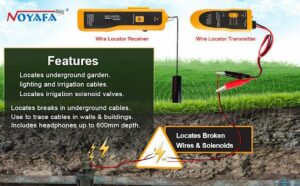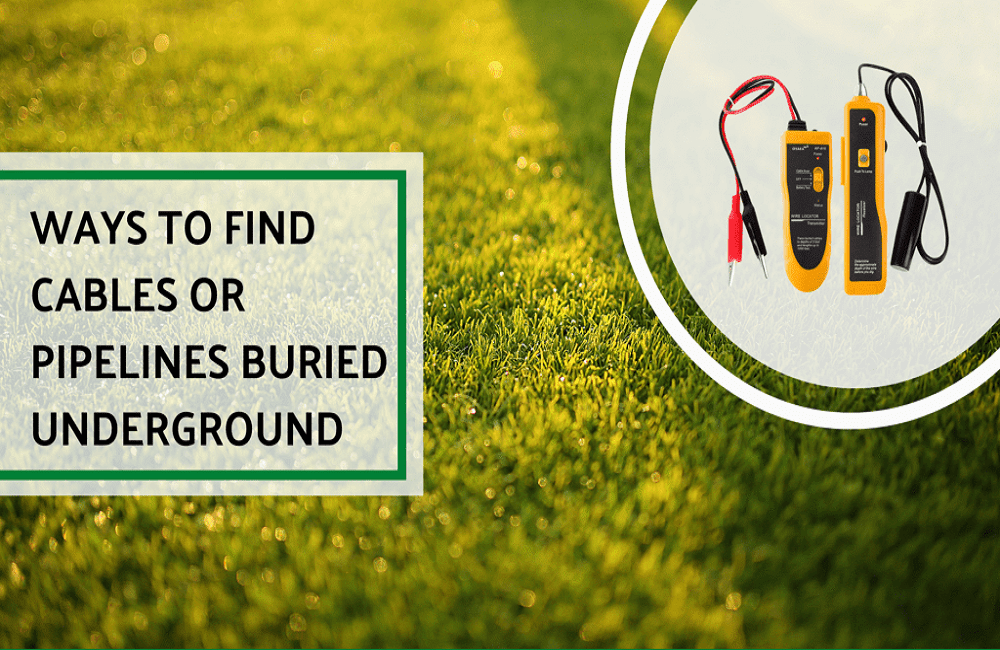What is the most important thing when beginning a new excavation or building project? It is to undertake underground utility mapping to ensure you find any buried pipelines and cables. Every home has underground pipes, cables, lines, and services for providing gas, water, and electricity.
If you miss finding buried pipelines or cables can lead to accidents like superficial burns or something serious. Thus, contractors must use the best tools to locate underground cables and effectively work on making the place safer for everyone.
They need to locate it to avoid damaging them and getting expensive fines. As we understand how essential finding underground utilities are, it is time to learn how to locate underground cables, pipelines, and more.
Detection methods for underground pipelines, cables, and more
There are multiple methods for scanning underground utilities to avoid the same. Let us discuss some of them below.
-
Ground Penetrating Radar
A non-destructive and no digging method uses radar pulses to lay the ground below and check for underground utility lines. This method can identify plastic, PVC, gas/power lines, wastewater, fiber optics, etc. It can also help find non-conductive and non-metallic materials, usually difficult to suss out. However, if the lines are far away from the ground, it will be challenging to use this method.
-
Electromagnetic Profiling Locator
It consists of a transmitter and receiver to locate conductive materials underground. However, this method works best for conductive and metallic detection and struggles with other materials such as plastic, terra cotta, or asbestos. This method is particularly efficient at picking up gas, electric, water, sewage, and other utility lines.
This method is often used to narrow a search area for utilities quickly. It uses electromagnetic waves to profile the conductivity and resistivity of the ground and develop a basic map of the site based on that.
-
Radio cable and frequency locators
To identify fiber optic, electric lines, and phone lines, radio cable and frequency locators are used. It uses energy generated by underground buried lines to suss them out. The best use for them is for phones and electric cables. They detect the proximity of these buried underground lines, which is the safest way.
-
Magnetometers
Magnetometers are another underground cable locator that works in areas GPR cannot access. These include uneven surfaces, woods, or wires buried deep into the grounds.
-
Color guide for utility mapping
You need to carry out utility mapping regardless of which tools you use for conducting site mapping. It helps because after discovering the utilities, the flags signal where they are and what their type is? Therefore, it helps in the long run, and you shouldn’t avoid using this method.
-
Under Ground Wire Locator
To ensure that you don’t damage the cable or can remedy the fault, you need to understand the route of any cable. We read about the various methods to detect underground cables/pipelines. One way is to use an underground wire or cable locator. There are two types of locations using a locator:
Active Location:
In this method, you locate a specific cable/line by injecting a particular frequency signal. It uses a transmitter with a tracer to receive it.
Passive Location:
An electromagnetic field is used to detect unknown lines by using a receiver. With this method, you cannot distinguish between line types. However, you can find them, which is essential before any excavation project.
Understanding the working of a cable locator
- All cable locators like the Noyofa underground wire locator have two modules- a receiver and a transmitter. The latter is an AC generator supplying signal current to all underground cables to trace pipes or cables.

- Next, the signal sends out an electromagnetic field like the cable, which a receiver can detect.
- The cable gets the signal through the direct connection or induction method. The former is an efficient way to apply a signal to any cable. It requires the cable to be connected physically. The same is not true for the induction method. It uses an electromagnetic field for the same.
- Next, it is time to detect the field that the transmitter is creating using a receiver. It will detect the EF at the cable’s top.
Finding an underground cable or pipeline
Choose the right method
Before you find anything, the first thing to do is select the right method aka the correct locator for your work. Locators are of two types- magnetic and utility. Choose the one which suits your needs better.
Determine what signal you need
Active or passive, which signal would you require? Determine this to move forward.
Try to identify the location of the underground cable
Before sweeping, guess the likely location of the cable. A surveyor plan can help you with identifying this. Now, use the cable locator with lower sensitivity to sweep the ground to find the target signal.
Narrow the search and mark the location
Gradually increase the sensitivity & make shorter sweeps to find the location with the strongest signal. Now, mark the location using nails or paints.
Following proper instructions, use these methods to locate underground cables and wires. It is necessary to suss them out before they lead to injuries.


